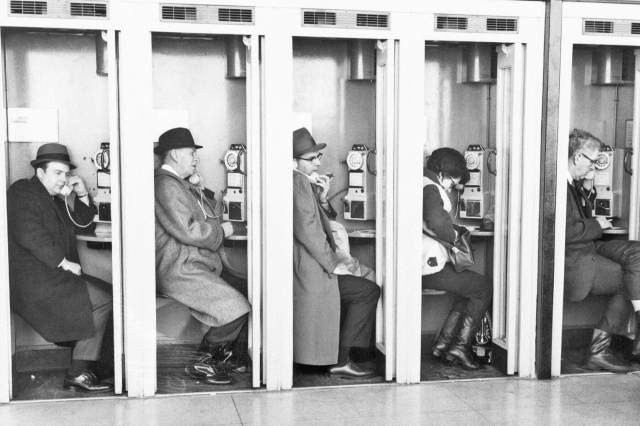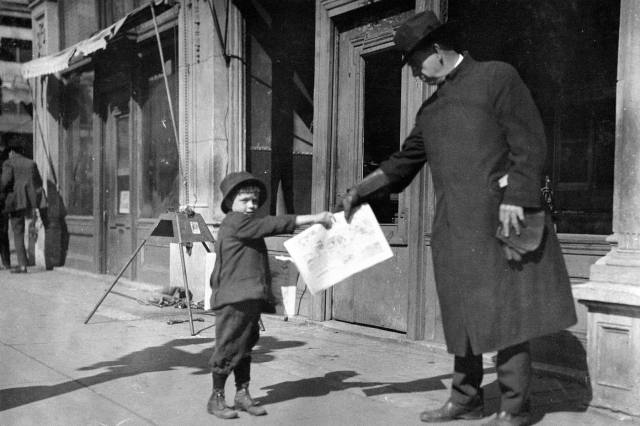Log in
Statistics
We have 484 registered usersThe newest registered user is mark5
Our users have posted a total of 48861 messages in 7215 subjects
THAT’S ENTERTAINMENT
CLICK ON ANY OF THESE LINKS TO FIND OUR EXTREME ENTERTAINMENT
UPDATED :
71 WGT TUTORIALS & 32 YOUNG46 TUTORIALS
CLICK HERE TO SEE OVER 100 YOUTUBE VIDEO TUTORIALS . FROM WGTers , WGT & YOUNG46 FORUM UPDATE
TO THE MANY WELCOME GUESTS . THIS FORUM IS NO LONGER A COUNTRY CLUB WEBSITE FOR A WGT COUNTRY CLUB . PLEASE FEEL FREE TO READ THE FORUMS.
THERE ARE MANY TOPICS OF INTEREST . OR NOT . THIS WEBSITE IS AN INFORMATION AND ENTERTAINMENT WEBSITE ONLY .
MUCH OF THE CONTENT IS ARCHIVES OF PURPOSES PAST .
THERE ARE SOME MORE CURRENT TOPICS .
REGISTRATION IS NOT NECESSARY TO READ THROUGHOUT .
REGISTRATION IS EASY AND FREE . THIS IS AN AD FREE WEBSITE . NOTHING IS EVER REQUESTED FROM REGISTERED MEMBERS .
REGISTRATION ENABLES COMMENTING ON TOPICS . POSTING NEW TOPICS . FULL ACCESS TO THE WEBSITE IMAGE HOST . WHICH IS A VERY COMPLETE AND CONVENIENT TOOL .
PLEASE ENJOY .
TIER & AVERAGE REQUIREMENTS
BASIC LEVEL AND AVERAGE REQUIREMENTS , AND SATURATION

WHILE YOUR HERE
WHILE YOUR HERE :
CHECK OUT THE INCREDIBLE PHOTOGRAPHY IN
MY SERIES
THIS USED TO BE THE HOME OF OUR WORLD CLOCK . WHICH CAN NOW BE FOUND IN ITS OWN FORUM ON THE MAIN PAGE ..
THERE ARE MORE WORLD CLOCKS INSIDE HERE .
WORLD CLOCK
FB Like
HISTORY FACTS * What a city street looked like 100 years ago *
Page 1 of 1
 HISTORY FACTS * What a city street looked like 100 years ago *
HISTORY FACTS * What a city street looked like 100 years ago *
7 Things You Would Find on a City Street 100 Years Ago

If we could travel back 100 years and land on a typical city street, we’d probably be mightily discombobulated. Some things would seem familiar: the buzz of the urban environment, people walking this way and that, and buildings with facades that could well still exist today. But looking around, we’d soon realize that we weren’t in Kansas anymore — or if we were, it would be Kansas City in the 1920s.
A century ago, America was going through a monumental change. For the first time in U.S. history, more people were living in urban areas than in rural areas. The cities were booming, and for many middle-class Americans, the 1920s were a decade of unprecedented prosperity. People were earning more and spending more, advertising had reached new levels of sophistication, and the automobile was changing the way we live.
So, before you step into that time machine, you’d better brace yourself. Here are seven things you’d find in a city street a century ago, back in the dizzying days of the Roaring ’20s.

Photo credit: [url=https://www.gettyimages.com/search/photographer?photographer=DEA %2F BIBLIOTECA AMBROSIANA]DEA / BIBLIOTECA AMBROSIANA[/url]/ De Agostini via Getty Images
Incandescent Street Lights
Before the development of practical light bulbs, street lights typically used piped coal gas, oil, or kerosene as fuel. The first electric streetlights were installed in Paris in 1878, but these used unwieldy and harsh arc lamps. Then came inventors such as Joseph Swan in the U.K. and Thomas Edison in the U.S., both of whom patented revolutionary incandescent light bulbs in 1880. Incandescent street lamps became the norm in many cities throughout the world, and the 1920s saw a wave of patents filed for innovative new street lighting. These electric lights, however, were often placed where they were needed rather than lining a whole street. So, 100 years ago, a city street at night would not have been as brightly lit as it is today, and pedestrians would often find themselves walking from one pool of yellowish light to the next.
Photo credit: Bettmann via Getty Images
Public Phones
Public phones and phone booths began appearing in the U.S. not long after Alexander Graham Bell patented the first telephone in 1876. By the 1920s, wooden phone booths were a fairly common sight on many city streets, but the wooden construction meant they were hard to maintain, limiting their popularity. In some cities, you’d be more likely to come across a public telephone room, which contained multiple booths. Individual outdoor phone booths became truly commonplace in the 1950s, when glass and aluminum became the booth-building materials of choice. Today, of course, public phones are heading rapidly toward extinction, now that most everyone can carry a phone in their pocket.

Photo credit: [url=https://www.gettyimages.com/search/photographer?photographer=The New York Historical Society]The New York Historical Society[/url]/ Archive Photos via Getty Images
Art Deco Design
The art deco style flourished in the United States during the 1920s, in both the visual arts and architecture, as well as product design. Walking down a city street 100 years ago, art deco would have been everywhere, from the facades of grand buildings such as the Empire State Building and the Chrysler Building, to the window displays of newly emerging department stores such as Macy’s and Saks. The style, characterized by bold geometric patterns, vibrant colors, and glamorous details, became synonymous with the opulence and extravagance that defined the Roaring ’20s.
Related:5 Inventions That Came Out of the Great Depression

Photo credit: [url=https://www.gettyimages.com/search/photographer?photographer=Interim Archives]Interim Archives[/url]/ Archive Photos via Getty Images
Child Vendors
Thankfully, modern child labor laws ensure that we don’t see children working in the streets anymore. But 100 years ago, it was a common sight. In 1920, about a million children aged 10 to 15 were working in America, out of a total population of about 12 million children in that age range. The most visible were those working in city streets, in jobs such as flower seller, shoe shine, and courier. Children carried messages — and sometimes money and sales slips — throughout the city, facilitating daily commerce for banks, factories, and offices. Even more notable were the “newsies,” young children (some as young as 5) who sold newspapers in the street. But by the end of the decade, a growing preference for home delivery and tougher child labor laws led to the decline of the “newsie” in urban America.

Photo credit: [url=https://www.gettyimages.com/search/photographer?photographer=Kirn Vintage Stock]Kirn Vintage Stock[/url]/ Corbis Historical via Getty Images
Flappers and Fedoras
If we traveled back 100 years, one of the first things we might notice is the fashion of the day. Men would be walking the streets wearing three-piece suits, thin bow ties, wingtip shoes, and the then-ubiquitous fedora hat. Sportswear was also becoming acceptable menswear, thanks in large part to the growing popularity of golf, which brought longer “plus four” trousers and wide-legged oxford bag pants to the urban milieu. Women’s fashion, meanwhile, reflected the newfound freedoms of the day. The dresses of the 1920s were loose, straight, and slender, with shorter hemlines. This was typified by the flapper style of the Jazz Age, with dropped waistlines and calf-revealing dresses — clothing that was stylish but also allowed women to move. New hairstyles completed the look, with bobs and waves becoming the defining cuts of the ’20s.
Related:5 Inventions That Came Out of the Great Depression

Photo credit: Bettmann via Getty Images
Horses
Today, we don’t encounter many horses on our city streets, but go back 100 years and you’d still occasionally see peddlers, milk trucks, coal wagons, and fire wagons using horse-drawn carriages. The heyday of horses, however, was coming to an end. In 1916, for instance, there were 46,662 horse-drawn vehicles in Chicago. By the end of the 1920s, this number had plummeted, and by 1940 there were fewer than 2,000 horse-drawn vehicles in the city. In New York City, meanwhile, the last horse-drawn fire engine was retired in 1922. The rise of the automobile had begun in earnest, bringing about a permanent change in the very nature of city streets.

Photo credit: Bettmann via Getty Images
Model T Fords
Arguably no invention changed the everyday lives of Americans in the 20th century more than the automobile. Between 1900 and 1920, the number of cars increased dramatically, from 8,000 to 8 million. By 1929, there were more than 23 million automobiles on American roads. These early vehicles, of course, looked very different from the cars we drive today. A hundred years ago, the car of choice was the Model T Ford, which brought driving to the masses. By the early 1920s, more than half of the registered automobiles in the world were Model Ts. They were so popular that Henry Ford himself once quipped, “There’s no use trying to pass a Ford, because there’s always another one just ahead.” Pedestrians, however, found it hard to adapt to the new laws of the street. With the introduction of jaywalking laws — facilitated by automobile manufacturers themselves — the streets became a place for cars, rather than for pedestrians, horse-drawn carts, and children at play, as they once had been.
 Similar topics
Similar topics» HISTORY FACTS * The world's largest underground city *
» HISTORY FACTS * The most famous typos in history *
» HISTORY FACTS * The funniest presidential campaign slogans in history *
» HISTORY FACTS * The best history movies from 2023 *
» HISTORY FACTS * The loudest sound in history *
» HISTORY FACTS * The most famous typos in history *
» HISTORY FACTS * The funniest presidential campaign slogans in history *
» HISTORY FACTS * The best history movies from 2023 *
» HISTORY FACTS * The loudest sound in history *
Page 1 of 1
Permissions in this forum:
You cannot reply to topics in this forum
 Events
Events



















































































» Disneyland vacation
» UP & COMERS
» WGT POETRY , QUOTES , MOMENTS , & MORE
» Word Genius Word of the day * Spindrift *
» Tales of Miurag #3 in Paperback Patreon Story in December!
» Download WhatsApp
» WORD DAILY Word of the Day: * Saponaceous *
» Word Genius Word of the day * Infracaninophile *
» THE TRUMP DUMP .....
» INTERESTING FACTS * How do astronauts vote from space? *
» WWE Crown Jewel is almost here! Don't miss the action LIVE today only on Peacock!
» NEW GUEST COUNTER
» Merriam - Webster Word of the day * ‘Deadhead’ *
» WWE Universe: Your Crown Jewel Broadcast Schedule has arrived!